Abstract
Three generalization procedures were used to investigate inhibitory stimulus control following discrimination learning with few errors. Three groups of pigeons acquired a discrimination between a green stimulus (the positive stimulus) and a vertical or horizontal line (the negative stimulus) through differential autoshaping followed by multiple schedule presentation of the two stimuli with gradually increasing stimulus durations. Genereralization testing was along a line-tilt continuum. For one group, the test involved a resistance-to-reinforcement procedure in which responses to all line tilts were reinforced on a variable-interval schedule. For a second group, also tested with the resistance-to-reinforcement procedure, the lines were superimposed on the green field that formerly served as the positive stimulus. A third group was tested in extinction with the combined stimuli. Control groups had no discrimination training but responding to green was nondifferentially reinforced. The control subjects responded more to all line tilts during testing than did the comparable experimental subjects, indicating that the negative stimulus had become an inhibitory stimulus. Both resistance-to-reinforcement groups revealed inhibitory gradients around the negative stimulus, but the gradient for the extinction group was relatively flat. These data are consistent with others that modify Terrace's early conclusion concerning the failure of inhibition to develop during errorless training.
Keywords: inhibitory stimulus control, errorless learning, resistance to reinforcement, combined-cues, stimulus generalization, generalization gradients, autoshaping, key peck, pigeons
Full text
PDF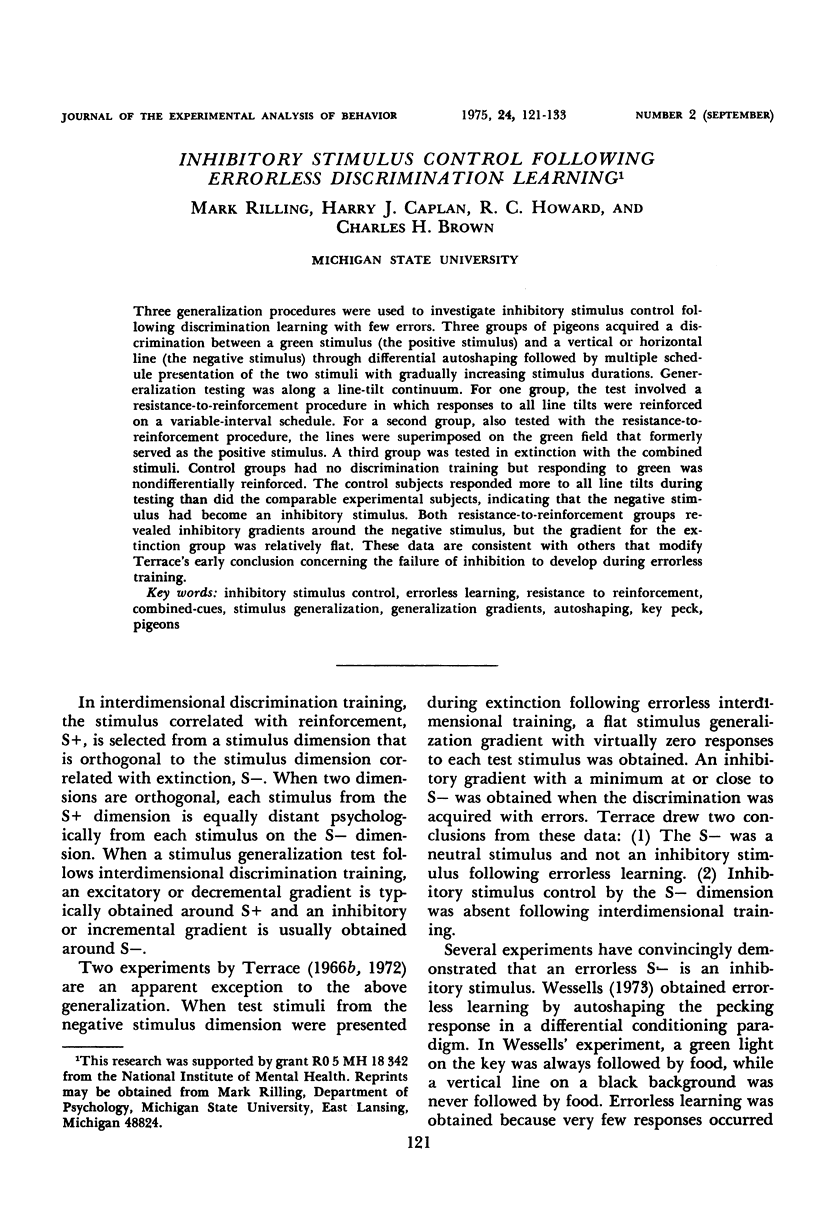
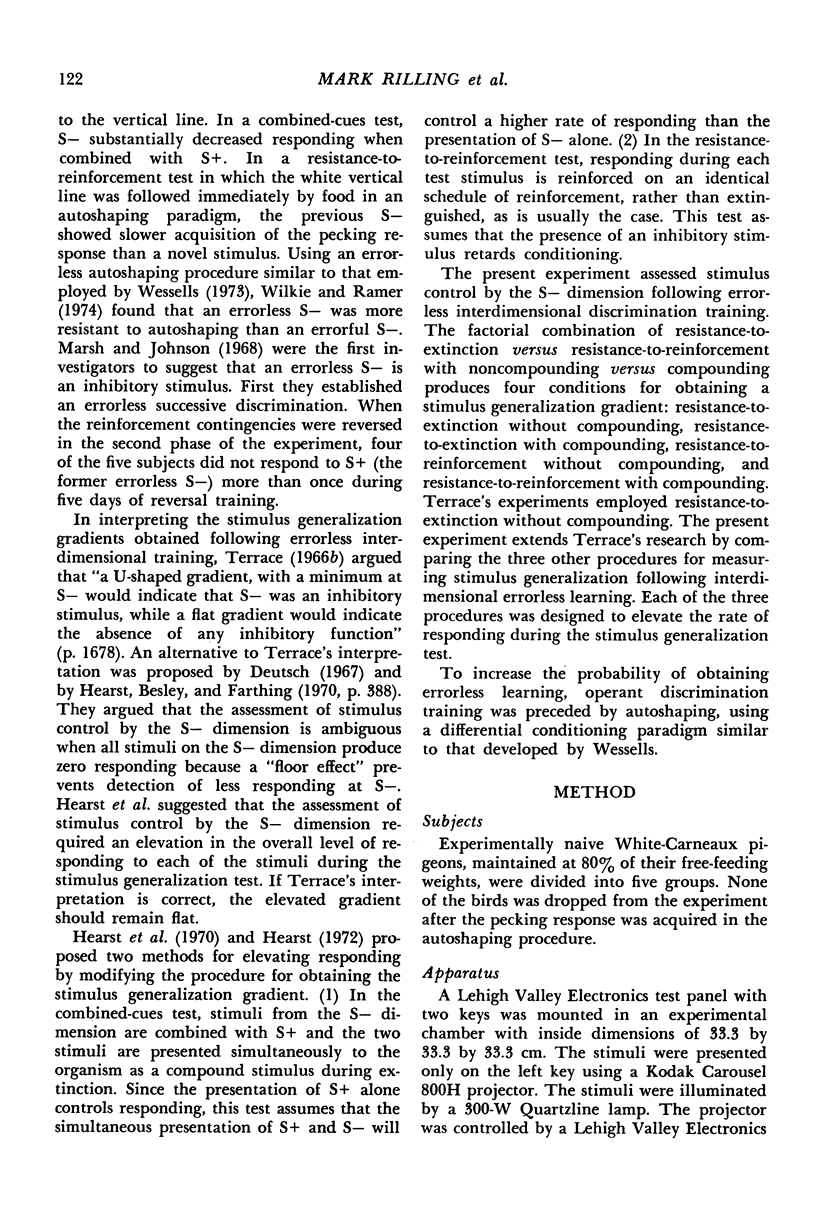
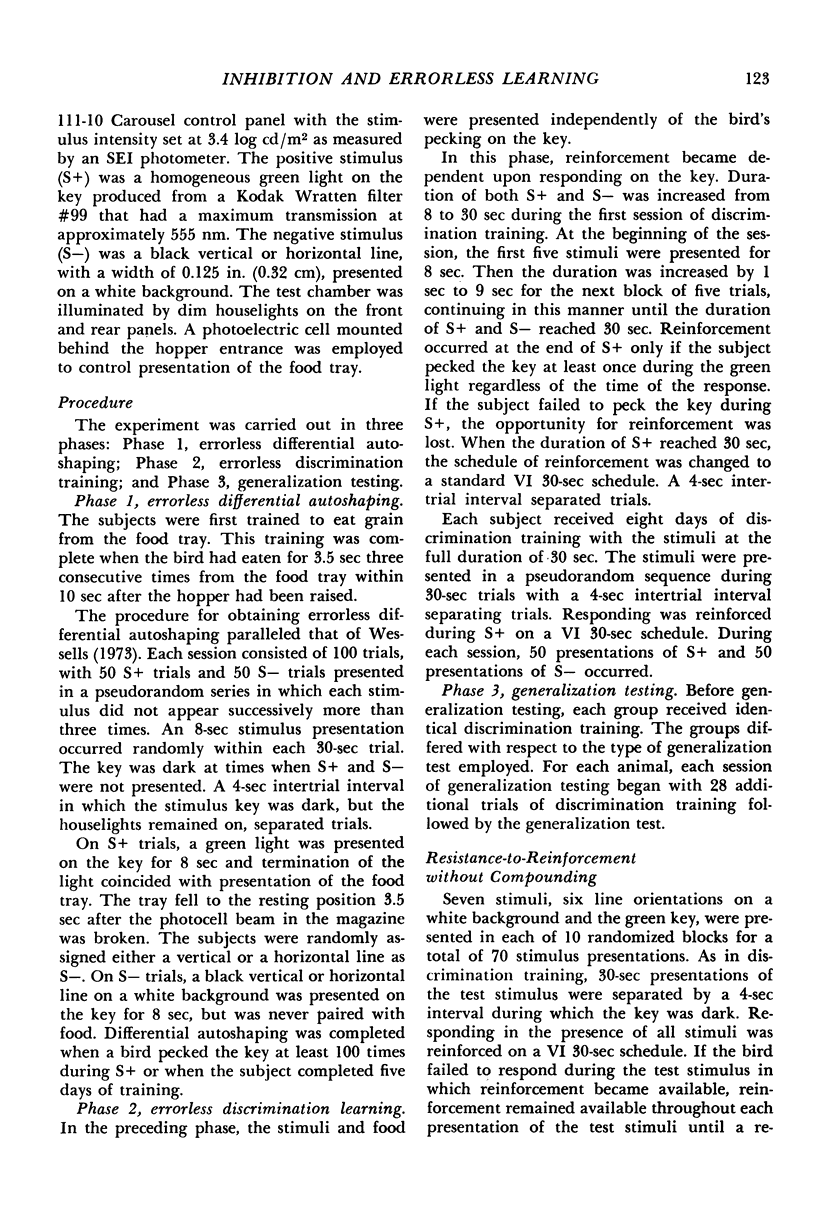
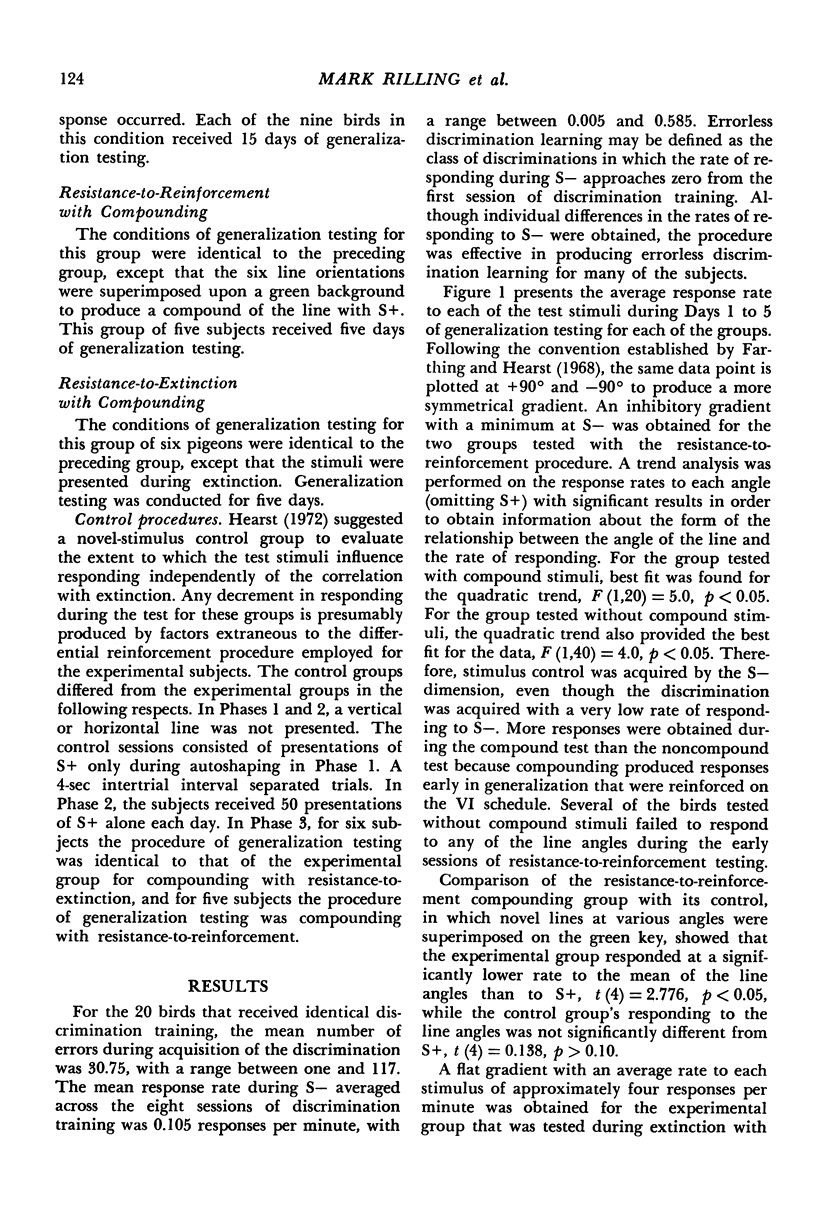
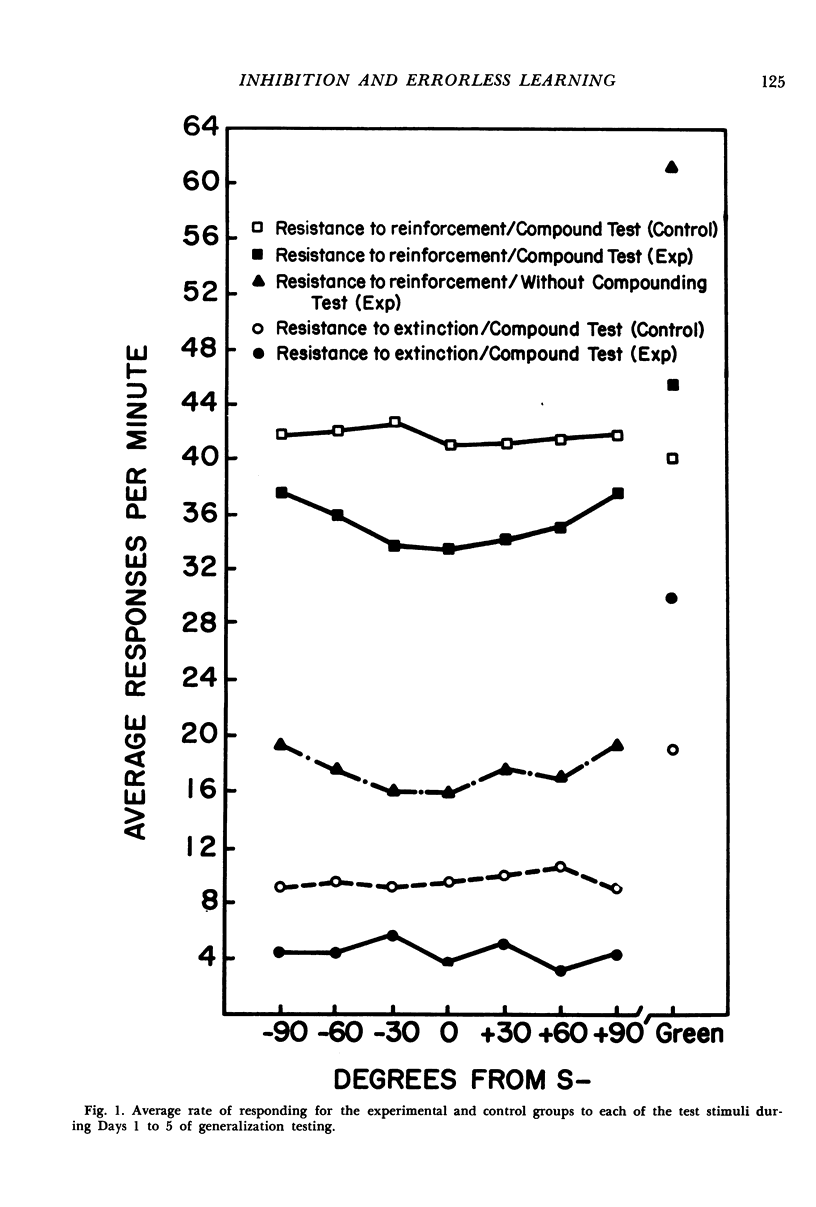
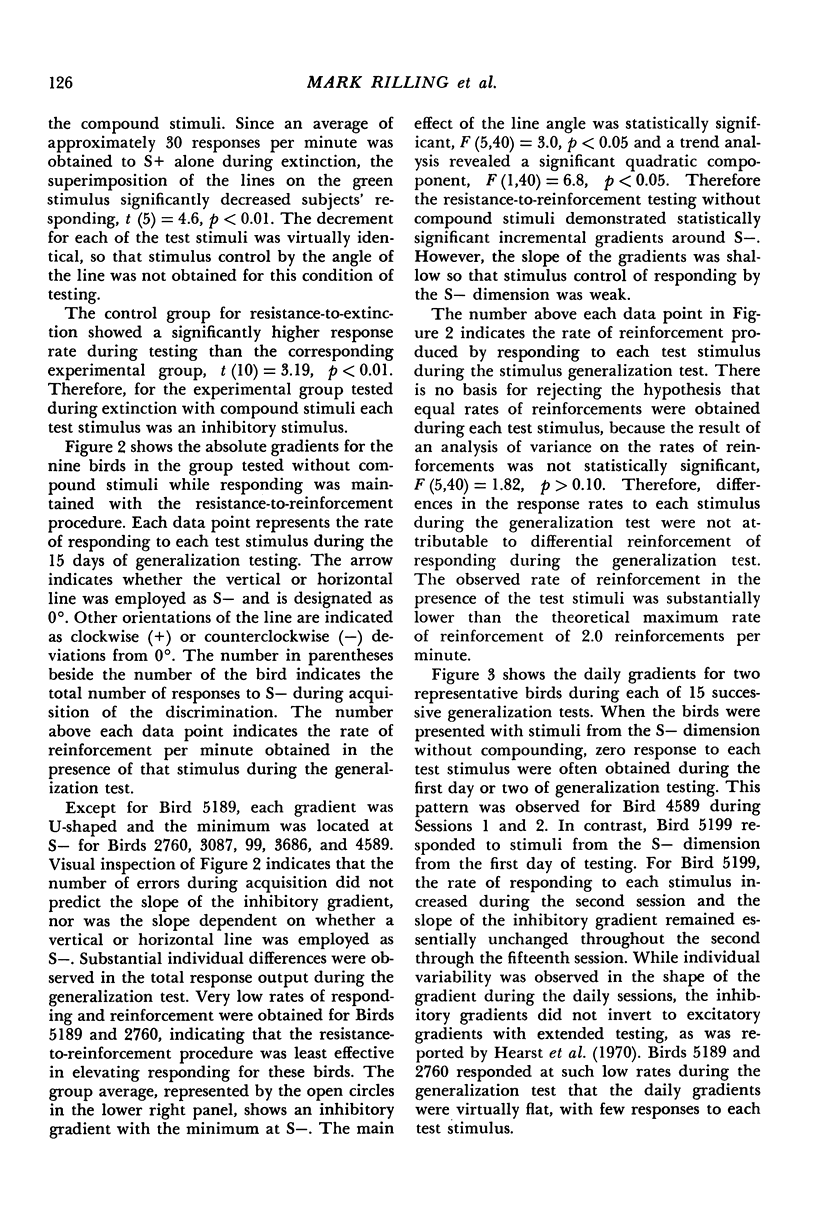
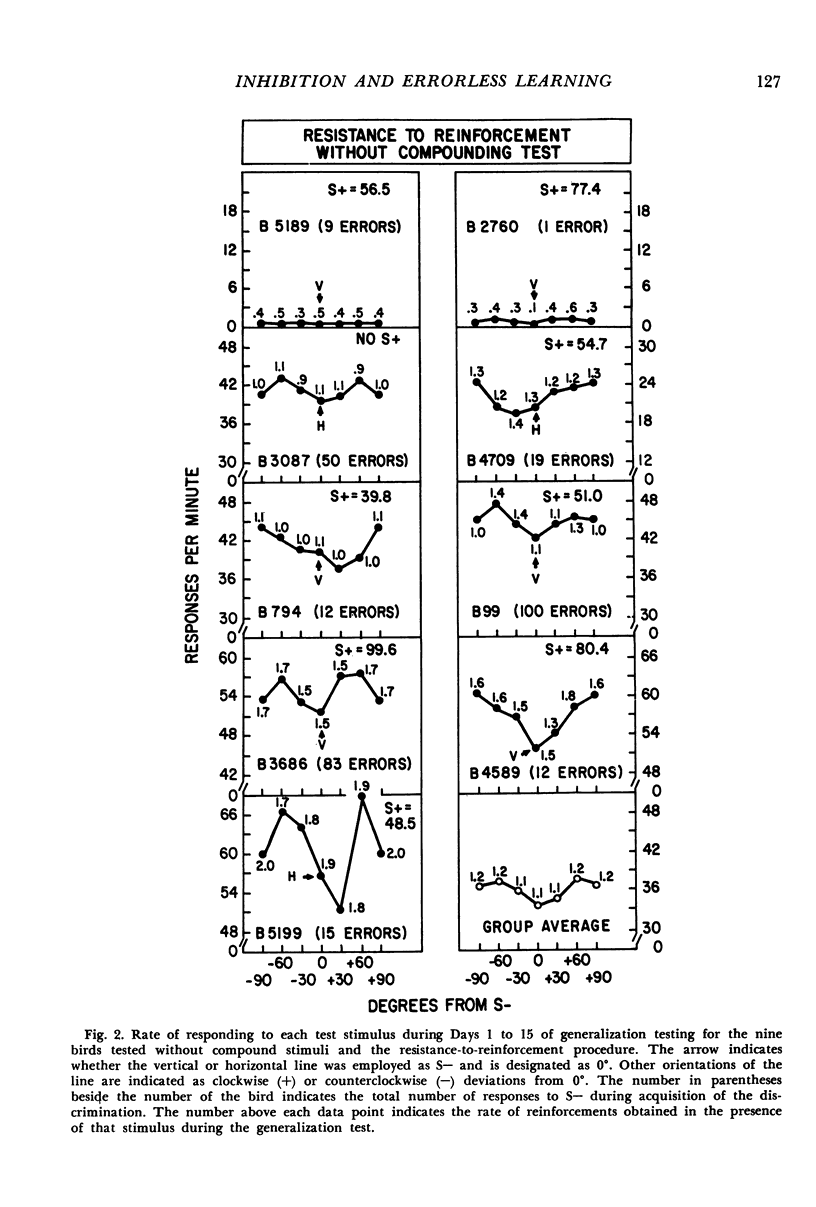
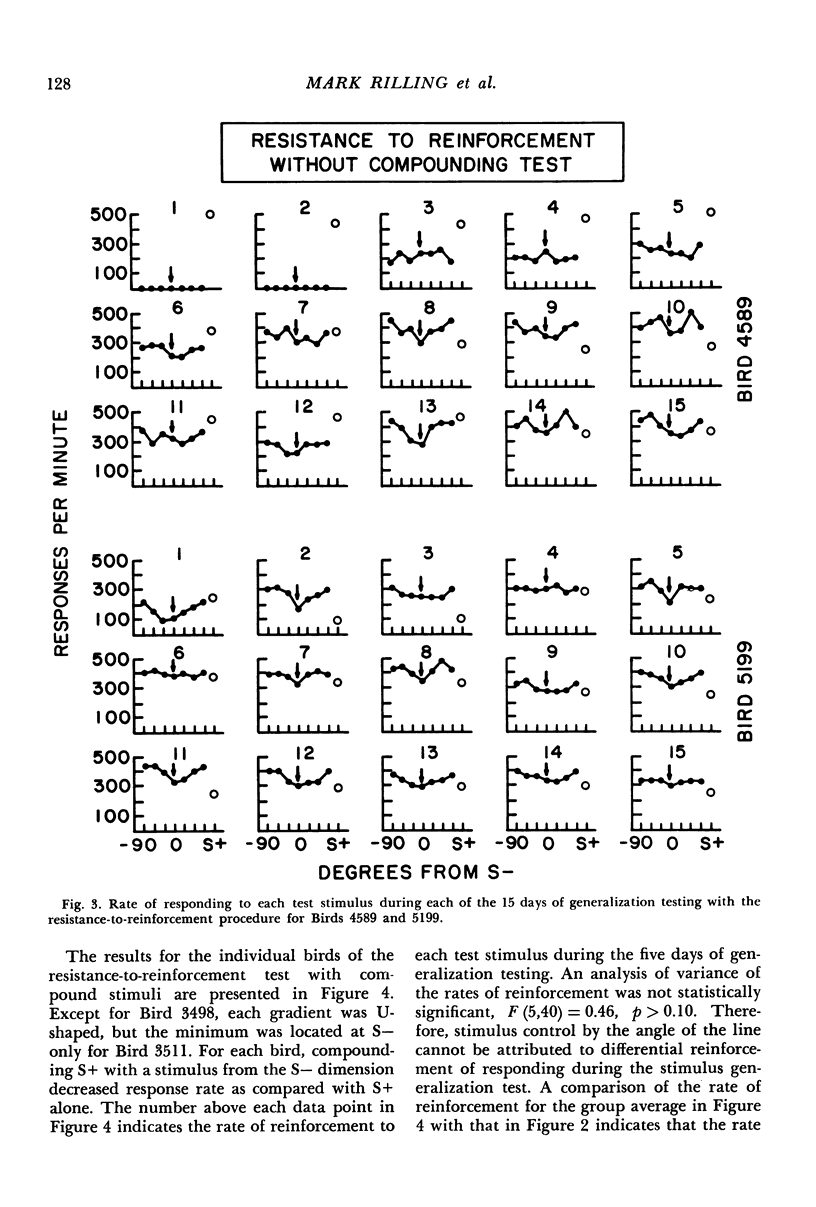

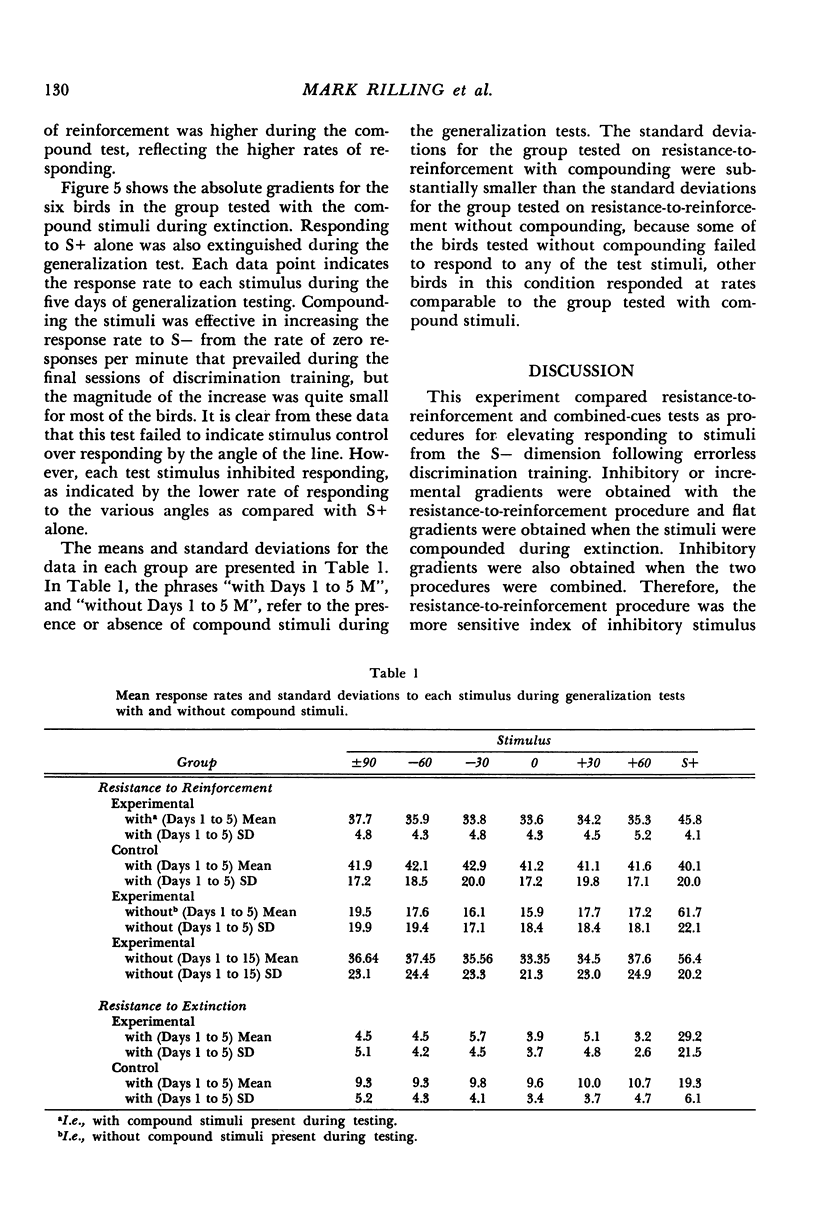
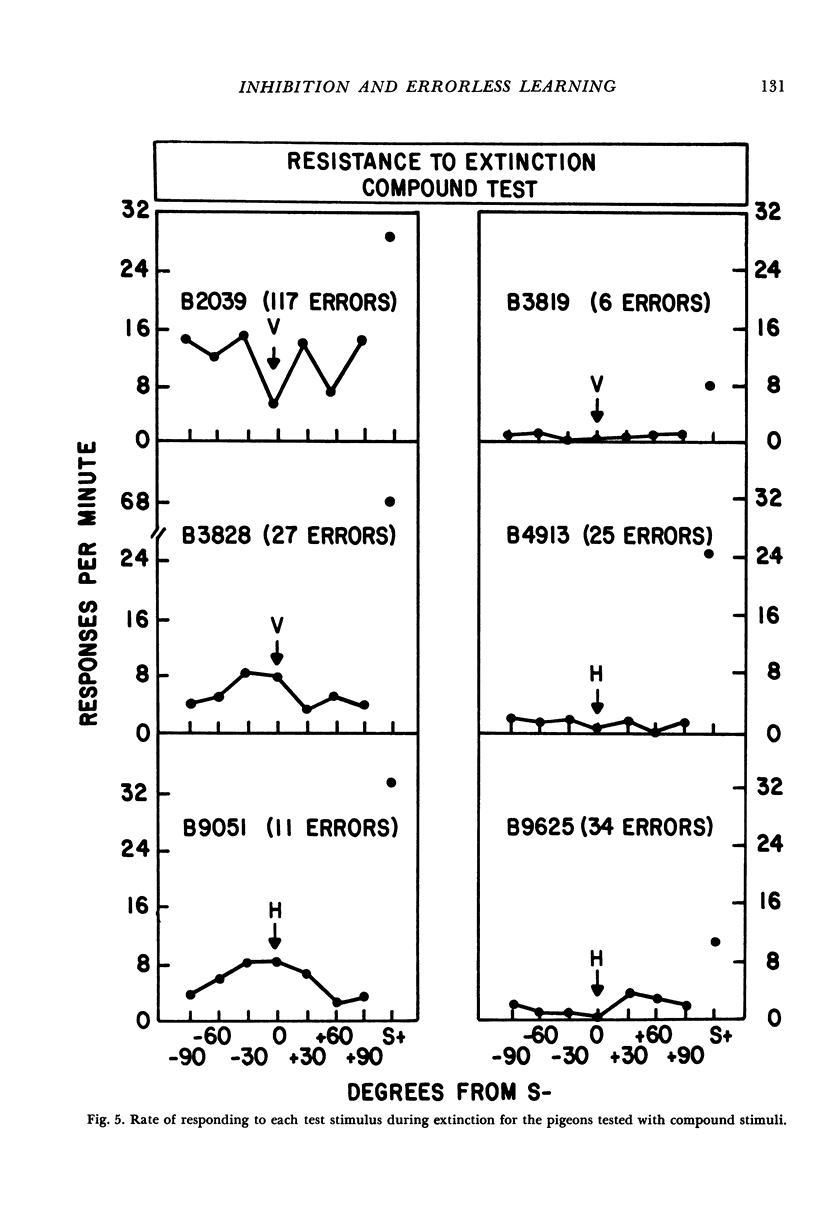
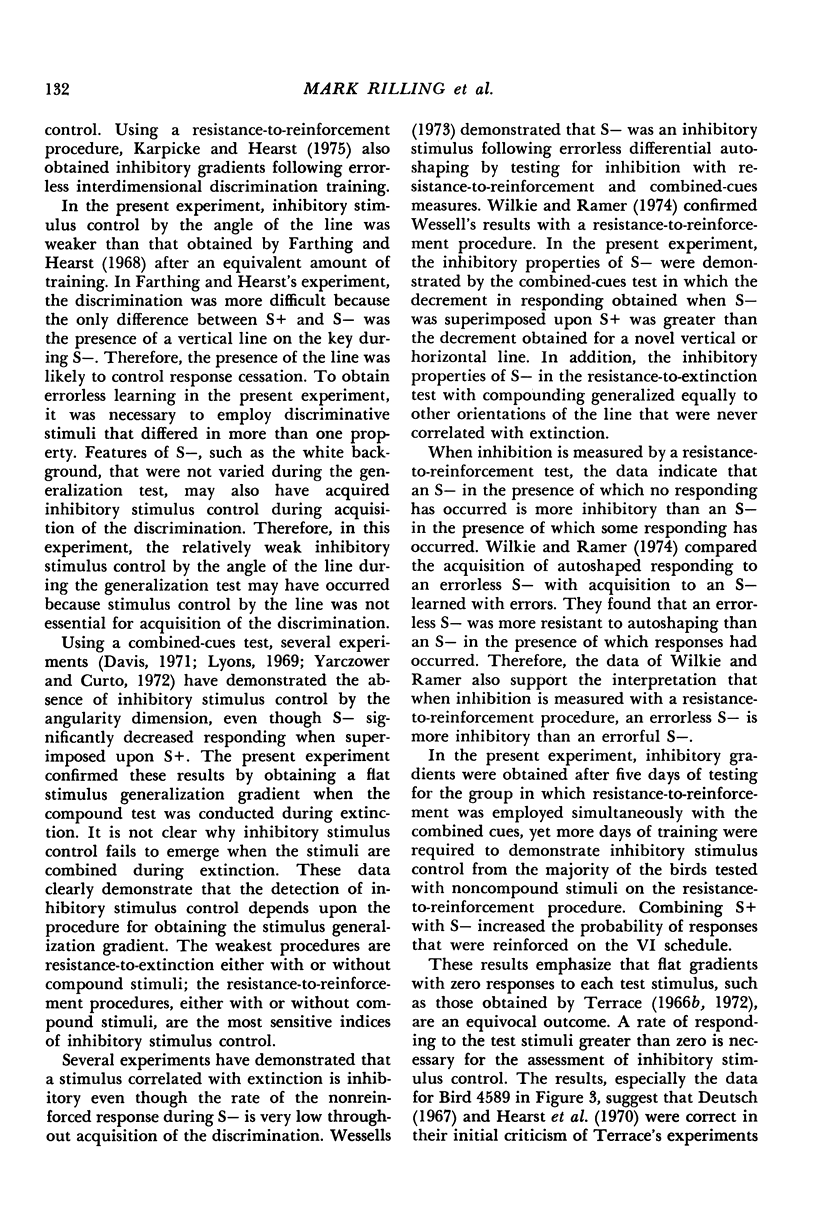

Selected References
These references are in PubMed. This may not be the complete list of references from this article.
- Davis J. M. Testing for inhibitory stimulus control with S- superimposed on S+. J Exp Anal Behav. 1971 May;15(3):365–369. doi: 10.1901/jeab.1971.15-365. [DOI] [PMC free article] [PubMed] [Google Scholar]
- Deutsch J. A., Terrace H. S. Discrimination learning and inhibition. Science. 1967 May 19;156(3777):988–989. doi: 10.1126/science.156.3777.988. [DOI] [PubMed] [Google Scholar]
- Farthing G. W., Hearst E. Generalization gradients of inhibition after different amounts of training. J Exp Anal Behav. 1968 Nov;11(6):743–752. doi: 10.1901/jeab.1968.11-743. [DOI] [PMC free article] [PubMed] [Google Scholar]
- Hearst E., Besley S., Farthing G. W. Inhibition and the stimulus control of operant behavior. J Exp Anal Behav. 1970 Nov;14(3 Pt 2 Suppl):373–409. doi: 10.1901/jeab.1970.14-s373. [DOI] [PMC free article] [PubMed] [Google Scholar]
- Lyons J. Stimulus generalization as a function of discrimination learning with and without errors. Science. 1969 Jan 31;163(3866):490–491. doi: 10.1126/science.163.3866.490. [DOI] [PubMed] [Google Scholar]
- Terrace H. S. Discrimination learning and inhibition. Science. 1966 Dec 30;154(3757):1677–1680. doi: 10.1126/science.154.3757.1677. [DOI] [PubMed] [Google Scholar]
- Wessells M. G. Errorless discrimination, autoshaping, and conditioned inhibition. Science. 1973 Nov 30;182(4115):941–943. doi: 10.1126/science.182.4115.941. [DOI] [PubMed] [Google Scholar]
- Wilkie D. M., Ramer D. G. Errorless discrimination established by differential autoshaping. J Exp Anal Behav. 1974 Sep;22(2):333–340. doi: 10.1901/jeab.1974.22-333. [DOI] [PMC free article] [PubMed] [Google Scholar]


